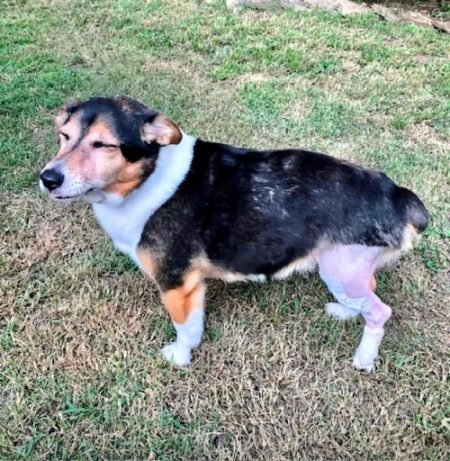There’s a deceptive simplicity in many realities we face. Consider a dog galloping joyfully through a field. Agile, unmistakably vibrant, until suddenly, it stops, limping, its play interrupted by a very common yet severe injury — a torn Anterior Cruciate Ligament (ACL). Often associated with athletes, this injury is prevalent among dogs and occasionally cats, clouding the lively spirit they naturally imbue.
The ACL, technically the Cranial Cruciate Ligament (CCL) in dogs, plays a vital role in knee stability. Its rupture severely disrupts the mechanics of movement. Unlike humans, dogs commonly suffer ACL injuries due to a degenerative condition within the knee, occasionally tipped over by traumatic events. The ensuing pain is visible in a dog’s limp or its choice to sidestep the affected leg altogether.
Comprehending this injury is more intricate than it seems. Obesity, for example, significantly exacerbates the issue. Carrying excess weight burdens the ligaments, particularly in genetically predisposed breeds such as Rottweilers and Labradors, rendering them vulnerable to this ailment. Here, prevention merges with cure — maintaining a healthy weight for pets is paramount, much like preventive maintenance in machinery to avoid breakdowns.
Diagnosis and treatment are a veterinarian’s domain, revealing a far more complex picture. Identifying the injury requires a combination of observation and X-rays, understanding that these ligaments, crucial yet invisible on radiographs, demand trained eyes to spot tell-tale signs like fluid buildup or bone displacement.
The path to recovery, however, is nuanced. For smaller dogs, conservative approaches like cage rest and pain relief might suffice, though larger breeds often need surgical intervention. Surgical options vary from Lateral Stabilizing procedures for small dogs to more complex surgeries like Tibial Plateau Leveling Osteotomy (TPLO) for larger, more active breeds. Interestingly, despite the high success rates of surgery, the debate among veterinary professionals about optimal procedures persists, echoing the broader dialogue in medical sciences about treatment efficacy.
The financial burden of medical intervention is another layer of complexity pet owners must manage. From diagnostics to surgery, costs mount significantly, emphasizing the importance of considering pet insurance as both a preventive and protective measure.
Ultimately, an ACL injury in pets is more than a momentary pause in their lively existence. It’s a profound reminder of the complexities within seemingly straightforward biological processes. As with many aspects of life, understanding, prevention, and appropriate intervention play critical roles in restoring and maintaining balance, both for pets and their caring owners. Just as in any field where expertise is critical, the journey of understanding and managing ACL injuries in pets enlightens us. It shows us that beneath the surface of simplicity lies the depth of nature’s intricacies.

